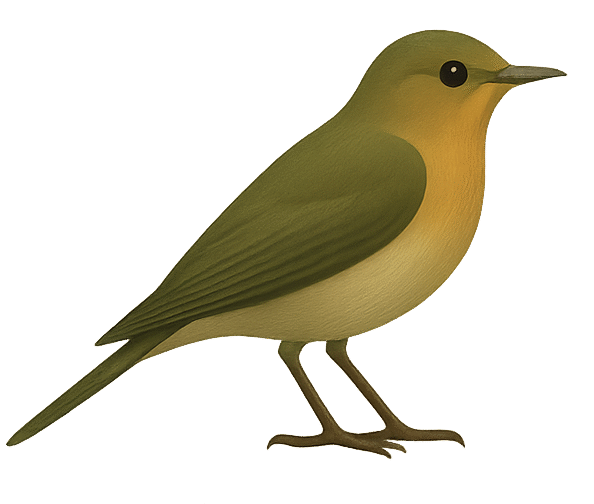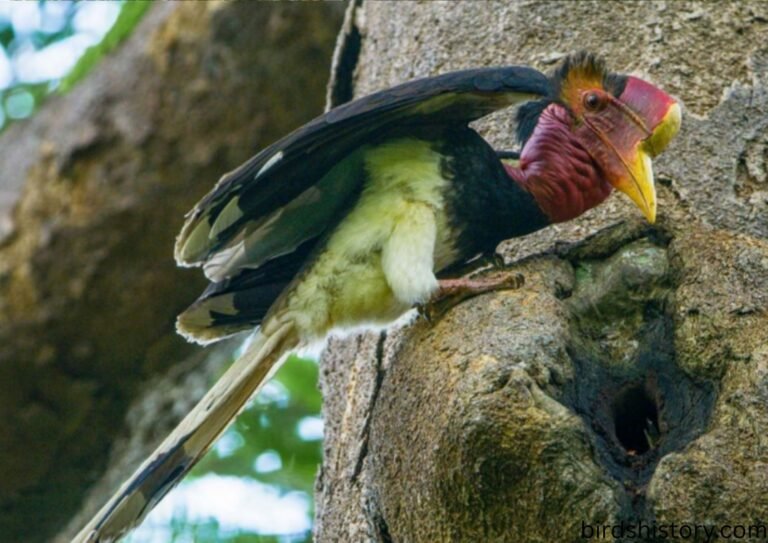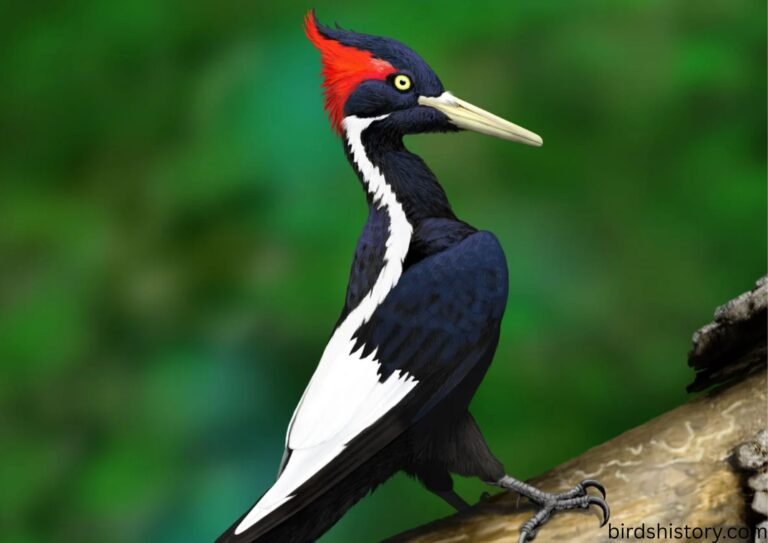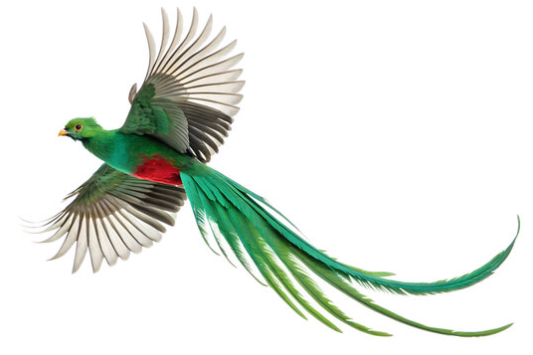The Charming Owl Finch: Nature’s Tiny Spotted Beauty
Some birds capture our attention with bright colors, others with bold songs. The Owl Finch does both in its own subtle way. This small finch is named for its owl-like face pattern, making it stand out among other finches. Also known as the Bicheno Finch or Double-barred Finch, it is native to Australia and has won the admiration of bird enthusiasts worldwide.
What makes the Owl Finch interesting isn’t just its cute looks, but its lively personality. These birds are social, adaptable, and surprisingly tough for their size. One fun fact is that unlike many small birds, Owl Finches are known for their gentle temperament, making them popular among aviculturists and bird watchers alike.
In this article, we’ll explore everything you need to know about the Owl Finch—from its taxonomy and physical traits to its behavior, diet, and conservation status.
Taxonomy / Classification of Charming Owl Finch
- Common Name: Owl Finch (also called Bicheno Finch or Double-barred Finch)
- Scientific Name: Taeniopygia bichenovii
- Family: Estrildidae (estrildid finches)
- Order: Passeriformes (perching birds)
- Class: Aves (birds)
Also read: /scarlet-macaw/
The Owl Finch belongs to the estrildid finches, a family of small passerine birds primarily found in tropical regions of Africa, Asia, and Australasia.
Charming Owl Finch Physical Description
The Owl Finch is one of the most distinct-looking finches thanks to its unique facial markings.
- Size: About 10–12 cm (4–4.5 inches) long
- Weight: Roughly 11–13 grams
- Color: The body is mostly brown on top with white underparts. The most striking feature is the white face encircled by a bold black ring, resembling an owl’s face mask.
- Wings and Tail: The wings are short but pointed, with a soft brown and white pattern. The tail is relatively short and neat.
- Beak: Small, conical, and pale grey-blue in color.
- Male vs. Female: Males and females look very similar, making them hard to tell apart by sight alone. In some cases, subtle differences in song or behavior may reveal the sex.
- Unique Traits: Their “double-barred” pattern across the chest gives them their alternative name.
This unusual combination of patterns and gentle features makes the Owl Finch a favorite among finch keepers.

Charming Owl Finch Habitat and Range
The Owl Finch is native to Australia, where it is found across northern and eastern regions.
- Range: From the Kimberley region in Western Australia across the Northern Territory, Queensland, and into northern New South Wales.
- Preferred Habitat:
- Grasslands
- Open woodlands
- Savannas
- Farmlands and lightly settled areas
- Urban Adaptation: They are known to adapt well to human-modified environments, often seen foraging in backyards and agricultural areas.
Unlike migratory birds, Owl Finches are residents of their region, though they may move locally in response to food and water availability.
Charming Owl Finch Diet and Feeding Habits
Owl Finches are primarily granivores, feeding mostly on seeds.
- Main Diet:
- Grass seeds (their favorite food source)
- Millet and canary seed when in captivity
- Occasional Foods:
- Small insects, especially during the breeding season when protein is vital for chick development.
- Foraging Style: They forage on the ground or in low vegetation, often in flocks. Their conical beak is perfectly designed for cracking tiny seeds.
Interestingly, they will also drink frequently, and unlike many small birds, they have a very direct drinking style—dipping their beaks and swallowing immediately rather than tilting their heads back.
Charming Owl Finch Behavior and Lifestyle
Owl Finches are charming in both looks and personality.
- Social Nature: They are highly social birds, often found in flocks ranging from small groups to dozens. In captivity, they do well in community aviaries with other peaceful finches.
- Flight: Quick and direct, though they don’t usually fly long distances at once.
- Vocalizations: Their calls are soft and melodious, consisting of gentle whistles and trills. Males sometimes sing to attract females, though the song is less elaborate than in some other finch species.
- Nesting Habits: They build dome-shaped nests using grass and feathers, usually in shrubs or low trees. In urban areas, they may even nest in garden hedges.
- Mating Rituals: Courtship includes gentle singing, hopping, and feather displays by males.
Their calm nature and tolerance of other birds make them particularly beloved among aviculturists.

Charming Owl Finch Reproduction and Lifespan
- Breeding Season: In the wild, Owl Finches breed during the rainy season when food is plentiful, though in captivity they may breed year-round.
- Nesting:
- Nests are dome-shaped and built from fine grass, lined with feathers.
- They are often hidden in shrubs or grass clumps for protection.
- Eggs:
- Clutch size: 4–6 eggs
- Color: White
- Incubation: About 12–14 days, mostly by both parents.
- Chicks: Hatch blind and featherless, fed by regurgitation. They fledge after about three weeks.
- Lifespan:
- In the wild: 4–6 years
- In captivity: Up to 8 years with proper care
Their cooperative breeding behavior, where both parents share responsibilities, ensures high survival rates of chicks.
Charming Owl Finch Predators and Threats
Like many small birds, Owl Finches face natural and human-related threats.
- Natural Predators:
- Raptors (hawks, falcons)
- Snakes
- Larger predatory birds
- Environmental Threats:
- Habitat destruction from agriculture and urban expansion
- Droughts affecting seed supply
- Human Impact: Though they are not directly targeted, land clearance and climate changes influence their food and shelter availability.
Fortunately, they are resilient and adaptable, which has kept their population relatively stable.
Charming Owl Finch Conservation Status
- IUCN Red List Status: Least Concern
- Population Trend: Stable
- Conservation Efforts: No major targeted conservation programs are needed currently, though general habitat protection benefits the species.
Their ability to adapt to farmland and urban gardens has helped them thrive even as some other species decline.

Interesting Facts About Owl Finches
- Their “owl face” pattern is a form of mimicry, making them look larger or more intimidating to predators.
- They are sometimes nicknamed “Bicheno’s finch” after James Ebenezer Bicheno, a colonial secretary in Australia.
- They are highly compatible with other peaceful finch species in aviaries.
- Unlike many small finches, they are relatively quiet, making them suitable for bird lovers who don’t want loud pets.
- Their calm demeanor has earned them the reputation of being one of the easiest finches to keep in captivity.
- In some parts of Australia, they are considered symbols of harmony due to their flocking behavior.
Conclusion
The Owl Finch is a delightful little bird that combines beauty, charm, and resilience. Its owl-like face, gentle nature, and adaptability make it a favorite among bird watchers and pet owners alike.
By learning about birds like the Owl Finch, we gain a better appreciation for the small but important creatures that share our world. While they may not be endangered, protecting their habitats ensures that future generations can continue to enjoy their spotted beauty and cheerful songs.
FAQs About Charming Owl Finch
1. Why is it called an Owl Finch?
Because of the distinctive black ring around its white face, which resembles an owl’s facial disk.
2. What is another name for the Owl Finch?
It is also called the Double-barred Finch or Bicheno Finch.
3. Are Owl Finches good pets?
Yes, they are gentle, quiet, and easy to care for, making them popular in aviaries.
4. What do Owl Finches eat in captivity?
A mix of seeds such as millet and canary seed, along with greens and occasional insects.
5. How can you tell male and female Owl Finches apart?
They look almost identical, but males may sing more frequently and display during courtship.
6. Do Owl Finches migrate?
No, they are sedentary birds, though they may move locally in search of food.
7. How long do Owl Finches live?
In the wild they live 4–6 years, while in captivity they may reach 8 years with good care.
8. What is their nesting style?
They build dome-shaped nests using grass and feathers, usually hidden in shrubs.
9. Are Owl Finches endangered?
No, they are listed as Least Concern by the IUCN.
10. Where can I see Owl Finches in the wild?
They are found across northern and eastern Australia in grasslands, open woodlands, and farmlands.







